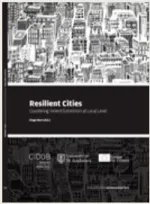Local strategy: elements of an effective local action plan to prevent radicalisation and violent extremism

At-risk individuals who radicalise and become violent extremists or terrorists do so for diverse reasons and through different pathways. They do, however, all live locally and interact with the local community, organisations and perhaps extremist milieus embedded within some local communities. The fact that someone might be in the process of radicalising can best be detected by the (professional) persons in the direct vicinity of him or her and can also best be influenced by those around him or her. This means that at local level – close to those who might be susceptible to radicalisation and close to their peers and relatives – early detection and prevention of radicalisation can be most effective. It is therefore crucial that detection, prevention and interventions are carried out at the local level.